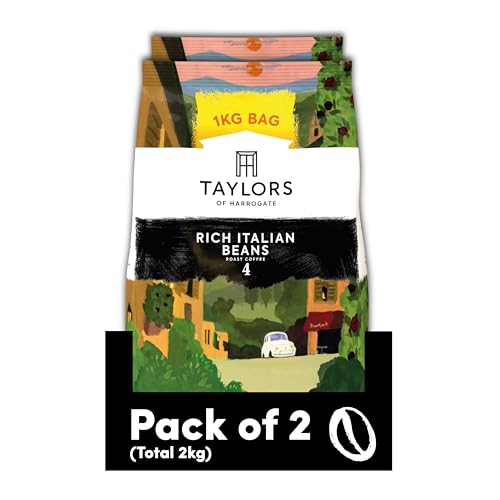What Are Coffee Beans?
Coffee beans are the seeds of a similar to a cherry fruit or plant. They thrive at higher elevations and climates similar to the ones in which they are cultivated. They also require certain amounts and types of soil, water and other elements.
Apart from flavor, they provide several health benefits. Trigonelline is a component of coffee that when roasted transforms into nicotinic (a water-soluble vitamin B). It is also high in the phenolic acids like chlorogenic acids which help lower blood sugar.
Origin
Everyone knows what a roasted coffee bean looks like, but few people know that it began as a berry. A coffee bean is a seed produced by a specific species of Coffea plant. Most of the time, the berries split open and each contains two beans, but in about 5percent of the harvested beans, only one bean split. This type of coffee bean is called a peaberry and it is usually manually sorted out and sold in separate packages.
The majority of all coffee is produced in what is known as the "Bean Belt" an area of the globe that lies in the Tropics of Capricorn and Cancer. Coffee is produced in various countries using various methods. coffee beans delivery has its own distinctive flavor profile and characteristics.
It is unclear the origin of coffee, however it is believed that the first coffee plants were cultivated in Abyssinia (now Ethiopia). The most famous story is about a goatherd referred to as Kaldi who noticed his goats screaming and excited after eating the bright red berries growing on nearby trees. Kaldi was able to taste the berries and felt a sense exhilaration. Following this, he introduced the drink to his neighbors and its popularity grew. In the 15th and 16th century, it became popular in the Islamic world, despite that Islamic authorities declared it to be intoxicating. an.
Flavor
The taste of coffee beans is influenced by the region and the species of the coffee plant, as well as on the soil, elevation, farming methods, and roasting process. You can achieve different flavors by altering the temperature and time of the roasting process as well as the air flow during the roasting.
The kind of syrup used to flavor coffee beans may affect the flavor. After roasting, the beans are coated with oil-based flavoring agents and then left to rest for 30 minutes. This allows beans to absorb the oils. The coffee beans flavored with flavor are then sorted and graded.

Making coffee beans more flavorful is an easy and cost-effective method to alter the flavor of coffee without changing its texture or color. The flavor of flavored coffee is often stronger than that of regular unflavored coffee. This is because the flavoring beans are soaked in flavoring syrup.
The flavor of coffee is also affected by the spices added to it when it is stored. Whole spices, such as cinnamon sticks, vanilla, and cocoa beans can be combined with freshly roasted coffee beans to give the beans a distinct flavor. This is especially effective when the beans are kept in an airtight container.
Health Benefits
Coffee beans are not only a great energy source for your body, but they have also been linked to a number of health benefits. These benefits include reducing the risk of Alzheimer's and Parkinson's disease, liver disease, and a host of other illnesses. Coffee beans contain caffeine, which can improve memory and cognitive performance. Coffee contains antioxidants that fight free radicals. The chlorogenic acid in coffee is believed to help prevent chronic diseases like heart disease and diabetes.
Coffee bean consumption has been linked to a lower likelihood of developing type 2 diabetes. It has also been found that it can help reduce the risk of developing Parkinson's disease, liver disease, and cancers of the colon and the colorectal tract. Coffee is linked to increased brain function and could aid in the prevention of depression. According to various studies the presence of a certain acids in coffee can boost levels of serotonin and dopamine.
While drinking coffee beans raw is a good option for many people, it shouldn't be used to substitute a healthy diet or regular exercise. The effects of caffeine should not be over-exercised as it can cause anxiety, jitters and insomnia. If you have acid reflux or a sensitive stomach you should also avoid coffee beans.
Preparation
The coffee plant produces a drupe, or fruit, that has two seeds (or beans) that are flat against the other. Each fruit has an outer skin, known as the exocarp, and a thin layer of pulp, also known as the mesocarp, on the top. Before roasting, the coffee seeds are removed, separated and cleaned. The beans can be processed in three different ways: dry, moist, or a hybrid known as wet-processed. The beans are then cooked after which they may be ground or whole.
Variety of coffee bean varieties offer a variety of flavor profiles to go with a variety of drinks desserts, food, and recipes. The selection of the coffee bean for specific recipes will depend on the desired taste and texture.
When the coffee bean is fully grown, it has an intact wax layer that protects its aroma and flavor compounds from the air. After grinding, however, these compounds are exposed to the air and begin to lose their flavor over time. When you brew coffee the temperature of the water you use is critical for preserving and capturing the flavors. Pouring coffee at a low temperature will not release as much of the flavor that is still developing and pouring at a higher temperature releases more. It is essential to brew coffee at the temperature that is suitable for your taste. If you don't, the taste can quickly turn bitter and sweet.
